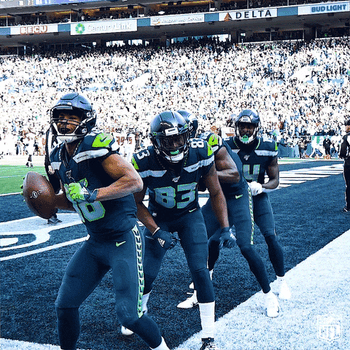Welcome to college football bowl season

🌹 The origin story
While the NCAA sponsors the lower-tier Football Conference Subdivision’s championship, which follows a traditional bracket-style format, the elite Football Bowl Subdivision (FBS) does its own thing.
- The FBS hosts independent postseason matchups, where contenders are handpicked for all-or-nothing contests called bowl games.
Bowl games go way back. The Tournament of Roses Association created the first college football bowl game, aka the Tournament East-West Football Game, as part of its annual festival in 1902 — four years before the NCAA was even created.
- In 1923, the Association moved the matchup to its new home, the brand-new Rose Bowl stadium in Pasadena, CA, named for its bowl shape. And so, the Rose Bowl Game, aka “the Granddaddy of Them All,” was born.
- Other cities wanted in on the massive crowds and nationwide attention the Rose Bowl drew to Pasadena, so they set up their own postseason games and festivals. By 2000, 25 cities hosted matchups, all using the “bowl” moniker.
Things really took off in the new millennium, as blue chip companies increasingly saw bowl games as marketing opportunities. In the past 20 years, there’s been an explosion in the number of games (currently a head-spinning 43), the money behind them, and, the baffling, meme-worthy names title sponsors give them.
Bowl games have been a staple of the football postseason for a century, even as the methods of determining the true national champion have changed. Some are more prestigious than others, but they’re all part of what makes college football special.
🏈 The impact

If the NCAA doesn’t sponsor bowl games, why do they matter? Two of them (Rose Bowl and Sugar Bowl) act as semifinals for the national championship, but there’s a lot on the line for the other 41, too.
Bowl games generate a ton of money. This year’s Rose Bowl host, LA, expects to receive an economic benefit to the tune of a cool $155M to $225M. That’s a big chunk of change.
- The teams also have a lot at stake: Even the most obscure bowl games offer hundreds of thousands in winnings. Take tomorrow’s Famous Toastery Bowl — Western Kentucky or Old Dominion will bag $225K.
- With the exception of a few independent FBS schools, these payouts go directly to the winning university’s conference, who then decide how to distribute the winnings among member schools.
The six most elite games — the Rose, Orange, Sugar, Cotton, Peach, and Fiesta Bowls — garner truly eye-watering payouts directly from the CFP. The CFP sends conferences $4M for non-playoff game selections and $6M for playoff-designated bowls, win or lose.
- This year, the SEC leads the pack with four teams in those elite games, meaning it's set to take home about $18M (!!!) from the CFP alone. This number doesn’t include the other five bowl games featuring SEC squads.
- As mentioned, the total winnings will be divided among its 14 current members. S.E.-See ya at the bank.
But teams don’t just play for the money. In college football, the only thing worth more than a payout is clout, and being invited to participate in a bowl game is the mark of a successful season. Winning one can do wonders for recruiting, fundraising, and general hype heading into the next season.
🏆 The big ones

Not all bowl games are created equal, in finances or in hype. Those aforementioned top-tier games that earn contenders big bucks are dubbed the New Year’s Six (NY6) because they happen on or around New Year’s Day, and playing in one is a BFD.
Even more tantalizing? Each year, the committee picks two of the NY6 to double as the semifinals for the CFP National Championship. This year, it’s the Rose Bowl (No. 1 Michigan vs. No. 4 Alabama) and the Sugar Bowl (No. 2 Washington vs. No. 3 Texas).
The non-playoff NY6 games include the Orange Bowl, (still-mad No. 5 Florida State vs. No. 6 Georgia), Cotton Bowl (No. 7 Ohio State vs. No. 9 Missouri), Peach Bowl (No. 10 Penn State vs. No. 11 Ole Miss), and Fiesta Bowl (No. 8 Oregon vs. the obligatory Group of Five contender, No. 23 Liberty).
- Though these teams aren’t competing for a national championship, making a NY6 game is a huge feat — and winning one secures well-earned bragging rights heading into the long eight month off-season.
😂 The fun ones

What the other 37 bowl games may lack in prestige, they make up for in famously unhinged titles, often underwritten by large companies who purchase naming rights. For example…
Kellanova (formerly Kellogg’s) sponsors two bowl games: The Cheez-It Citrus Bowl (this year, No. 17 Iowa vs. No. 21 Tennessee) and the Pop-Tarts Bowl (No. 18 NC State vs. No. 25 Kansas State), which caught some major buzz for both its Prop-Tarts giveaway and college football’s first-ever edible mascot. Terrifying, yet iconic.
Some games are known for their classic venues, like the Wasabi Fenway Bowl (Boston College vs. No. 24 SMU) and the Bad Boy Mowers Pinstripe Bowl (Rutgers vs. Miami), which take place in historic MLB stadiums. Play ball.
- Other bowls were originally named after their locations. When title sponsors swooped in, they created gems like the RoofClaim.com Boca Raton Bowl (Syracuse vs. USF), the 76 Birmingham Bowl (Troy vs. Duke), and the EasyPost Hawaii Bowl (Coastal Carolina vs. San Jose State).
But the one that takes the cake? It’s a tough call, with contenders like the Avocados From Mexico Cure Bowl (Appalachian State vs. Miami of Ohio), the pirate-themed Union Home Mortgage Gasparilla Bowl (Georgia Tech vs. UCF), and the carb-heavy Famous Idaho Potato Bowl (Utah State vs. Georgia State).
- But nothing beats the Duke’s Mayo Bowl (UNC vs. West Virginia), with its own stomach-churning twist on the classic Gatorade bath and some truly historic yet horrific off-field moments. What other bowl offers fans the chance to be crowned a Mayo Dumper?
Enjoying this article? Want more?

Sign up for The GIST and receive the latest sports news straight to your inbox three times a week.



